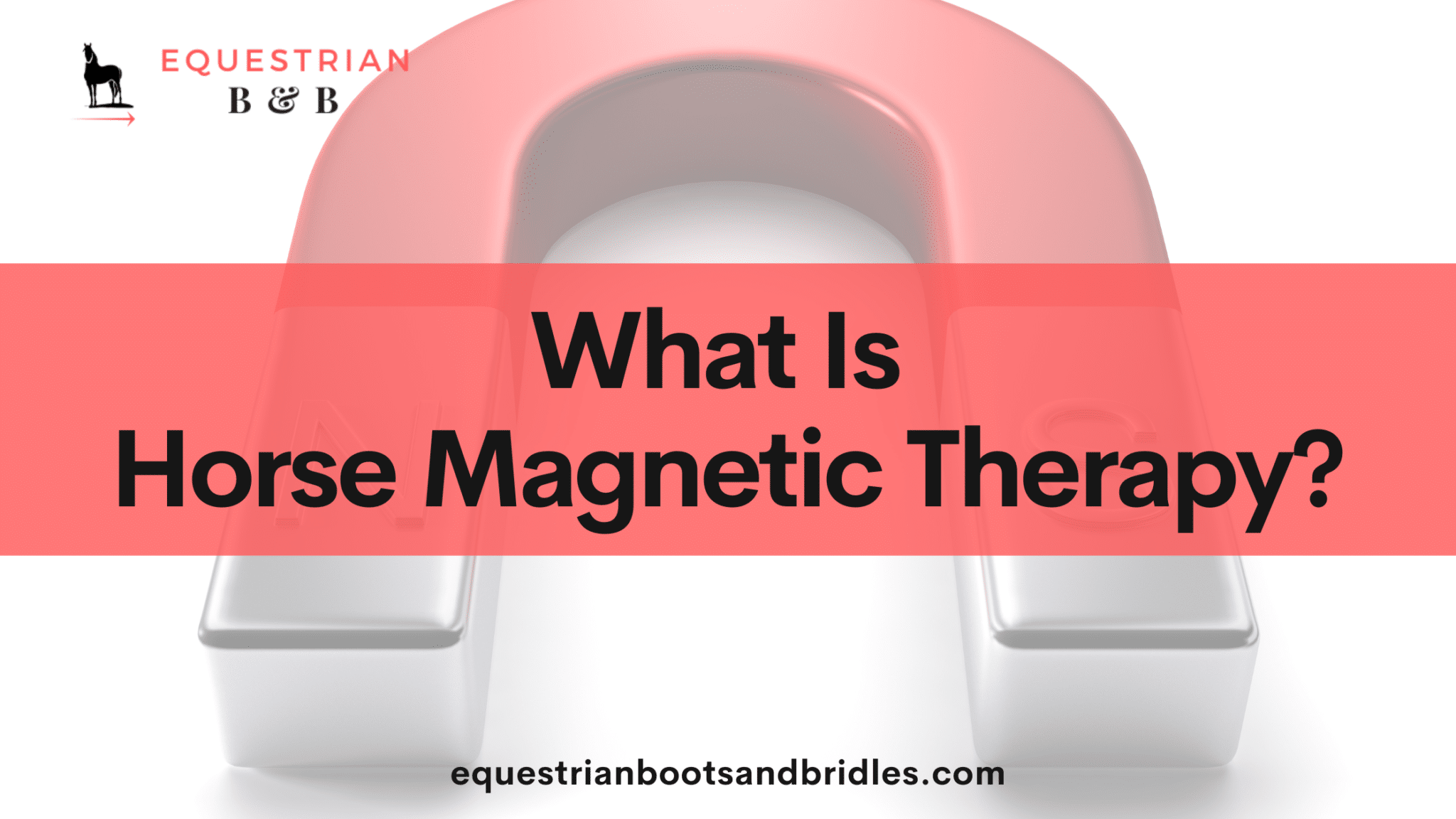When I first heard about magnetic therapy for horses, I had a serious flash of Marvel’s X-Men and Magneto zapping a horse with a wave of magnetism. Thankfully, equine magnetic therapy isn’t nearly that drastic, but it may actually be all that potent at helping your horse’s muscles recover from injuries (and prevent injuries too!).
An opportunity presented itself at the yard I manage to see a professional in action while treating a horse with a PEMF machine—the gold standard in magnetic field therapy. Using magnetic pulses, this machine at first seemed to do little to the horse being treated, but the results were surprising over the next few days.
Have you ever wondered about getting magnetic therapy for your horse? Here are all the facts so you can decide whether to bite the bullet and splurge on an expensive product or rather look elsewhere for your horse’s unique needs.
As always, the information in this article is for informational purposes only and should not be considered medical advice for your horse. You should always consult with your vet when treating your horse.
What Is Horse Magnetic Therapy?
Throughout history, anecdotal evidence has suggested that magnets have the power to heal animals and people. In the last few decades, magnetic therapy has seen a massive bloom in popularity, and many horse owners claim that their horses are all the better for the assortment of bands, blankets, and machines they invest in. I wondered if there was scientific evidence to support any of their claims.
Magnetic therapy, in a layman’s nutshell, is when a magnet is applied to the horse’s body, creating magnetic fields that affect the horse’s own magnetic field and positive or negative charge. These magnetic fields and magnetic waves are said to heal the horse’s body, tissues, tendons, and ligaments.
Experts will go one step further and explain that magnetic therapy is not a cure in itself, but that it rather helps the body’s natural healing process to restore circulation and promote an increased blood flow, which helps heal injuries and flush out toxins.
My main concern was whether magnetic therapy was quackery or actual healing. In a double-blind study by Dr. Carlos Vallbona, it was proven that magnetic therapy did reduce pain by almost 50% in humans. So, while some “neigh-sayers” insist there’s very little scientific evidence supporting the efficacy of magnetic therapy, I am cautiously leaning toward investing in a magnetic blanket to help my aging mare with her aches and pains.
How Magnetic Therapy Works
So, now we know what magnetic therapy does, how does it actually do any of it? I was given the following basic explanation:
When you hold two magnets together, their magnetic fields will either attract each other or repel each other. Each magnet carries a charge, which is specific to each part of the body (and determined by the level of exercise, blood flow, and inflammation). A trained therapist moves magnets or a magnetic device with a different magnetic field strength that can either draw the body’s field toward it, or repel that field to push it away.
Magnets can cause this action deep inside the body, using these fields to ease muscles, release cramps, and reduce inflammation by increasing circulation. Using magnets, you can affect the inside of the horse’s body with non-invasive techniques. Magnetic products can help with healing soft tissue, deep muscle cells, and general stiffness.
A Closer Look at a Magnetic Therapy Session
What does a session with a magnetic therapist look like for your horse? A therapist may specialize in magnetic therapy only or use it as a complementary therapy to massage, chiropractic work, and equine body work.
The therapist will start by collecting a case history of your horse, age, health, type of work, average carry capacity (rider’s weight), saddle fit, and injuries. They will then do a static assessment by viewing the horse’s muscle conformation and the way they carry themselves at the halt. Next, a dynamic assessment may follow (unless your horse is too severely injured to move much) in the walk, trot, and canter.
Once the therapist knows what parts of the body they need to work on, they will begin applying their different therapy modalities to your horse’s body. There are many different types of magnetic therapy devices, from sum chi and magnetic blankets to bands and static machines.
Improvement may show in a small amount at first, but over the course of the next few days, your horse’s overall way of moving and level of pain and inflammation should continue to improve.
Pros of Magnetic Therapy for Your Horse
There are several potential benefits to magnetic therapy for horses:
- Better circulation due to magnetic fields’ blood vessel dilation effects
- Reduced inflammation due to increased circulation
- Injury healing due to circulation that releases muscle tightness
- Investing in a magnetic therapy product means you can use it over and over again to treat your horse when needed
Cons of Magnetic Therapy for Your Horse
Of course, there are a few downers to magnetic therapy to consider before you jump on the magnetic field bandwagon. Here are a few things to keep in mind:
- It’s costly to invest in magnetic horse products
- While magnetic therapy is non-invasive, it’s also slow in gain (it takes time for the body to heal itself)
- Not all injuries will respond to magnetic therapy
- Magnetic therapy won’t heal bone
- Magnetic therapy will usually need to be applied with a combination of medical and physical rehabilitative therapies
When to Choose Magnetic Therapy for Your Horse
It may seem like I am resistant to investing in magnetic therapy, my main concern being the cost of some products. However, magnetic therapy may be able to help your horse in certain situations, especially if you have the budget to try it out. The trick is knowing when to use it and when to call your vet.
So, I did eventually buy a magnetic rug, which is well-used at the yard now. I know that if a horse comes in with a massive contusion on their leg, I can apply the magnetic rug for a session, then see if the swelling starts to decrease and if the horse is more mobile. However, I will still give my horse a good dose of Bute for pain and keep my vet informed in case I need her to come out later.
The jumpers at the yard swear by magnetic boots that form part of their jump-walk-ice-wrap routine to help reduce inflammation in those hyper-extended joints. So they stick to the basics that jumpers have always used, with magnetic treatment being an add-on to help give their horses that edge to faster recovery and maintenance.
I’ve also used the magnetic rug on a horse with colic while we waited for the vet to arrive. The magnetic waves soothed the stomach cramps, but we still needed the vet to come and administer Buscopan and anti-inflammatories.
In other words: I suggest using your magnetic therapy products when you can assist your horse, but not relying on them solely and replace good common sense. When your horse needs a vet, make the call.
When Magnetic Therapy May Be Bad for Your Horse
There are a few cases when magnetic field therapy can be harmful to any animal or person. If you apply a magnetic device and your horse becomes agitated and is clearly upset, it can indicate the magnetic field is the wrong strength for their needs. Most commercially available magnetic products function at a general lower level setting, which are not meant to treat intense injuries with higher frequency pulses.
A horse with a heart condition may also respond negatively to any changes in their circulation. So it’s a good idea to have your horse checked out before you buy a product and discover your horse’s heart murmur has become a roar.
A Quick Overview of Horse Magnetic Therapy Products
There are many different magnetic devices on the market aimed exclusively at horses and horse owners. These devices all aim to improve the horse’s overall health, promote healing after injury, and provide regular treatment of horses after intense work or long periods of rest.
Use such a device as part of your daily routine as it reduces inflammation at the sites where the magnets work through the soft tissue to the underlying ligaments. So if you’d like to dip your spurs in the magnetic waters, so to say, here is a brief overview.
Magnetic Therapy Blankets
From more affordable magnetic sheets and stable blankets to the gold-standard of home therapy—the Bemer Blanket—you can choose a product that suits your pocket and horse’s needs.
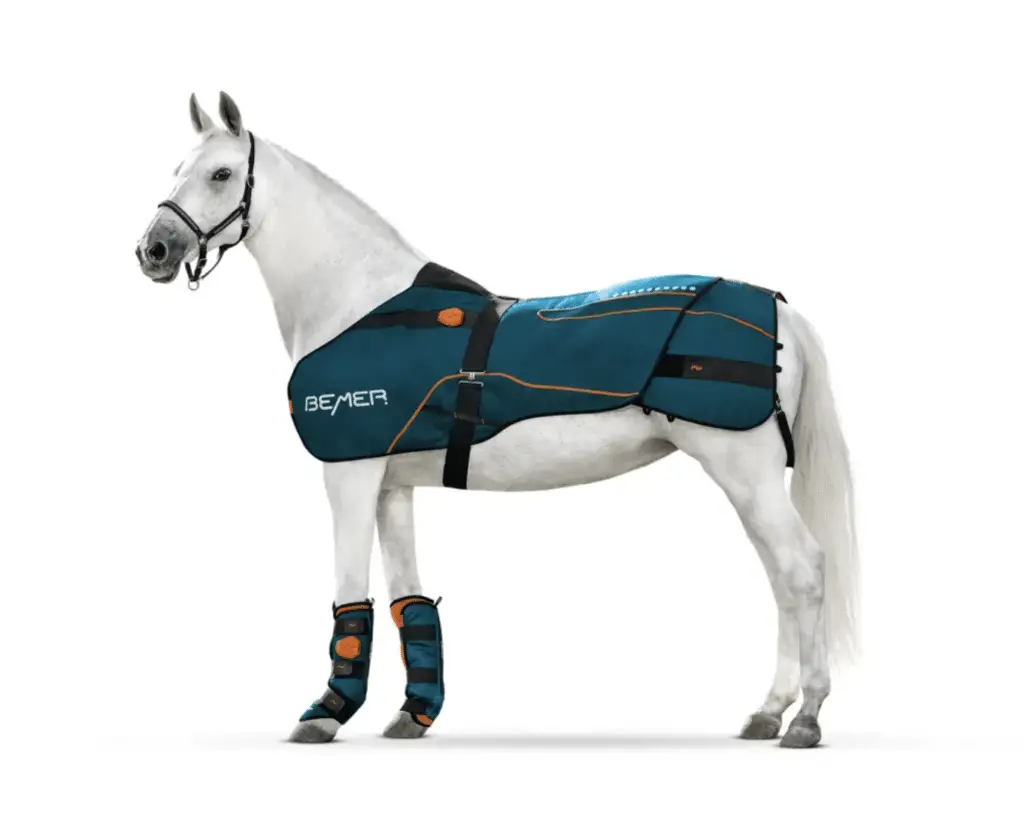
In short, the Bemer Blanket:
- Targets all neurological points
- Includes the magnetic boots
- Full carry case and body straps
- Fit, switch on, and enjoy-design
Magnetic Therapy Boots
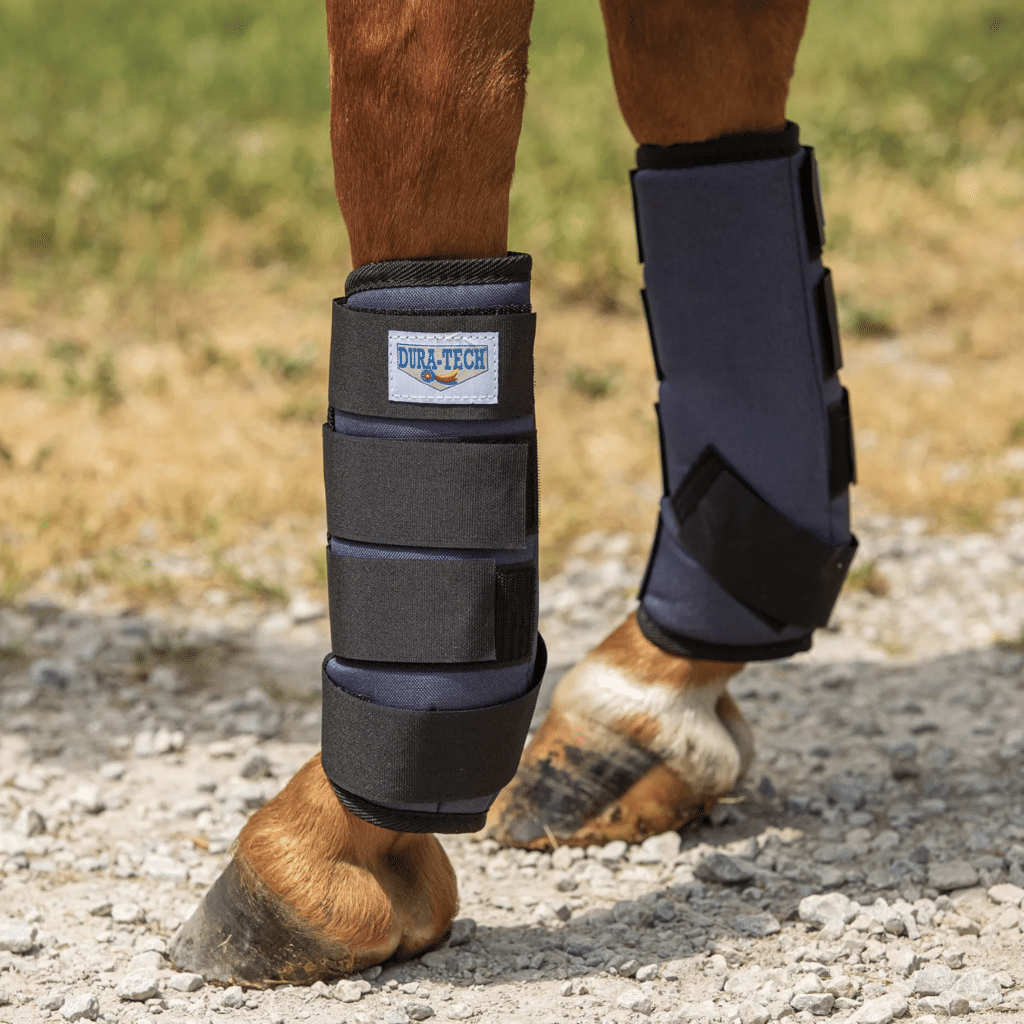
For a budget option, consider the Dura-Tech® Magnetic Shin & Tendon Wraps, which feature six magnets each. The magnetic therapy boots offer:
- Low to medium intensity magnetic penetration with 1100 GAUSS magnets
- Sturdy construction with 1,000 denier ripstop fabric outer
- Four secure fastening Velcro bands
Magnetic Therapy Bands
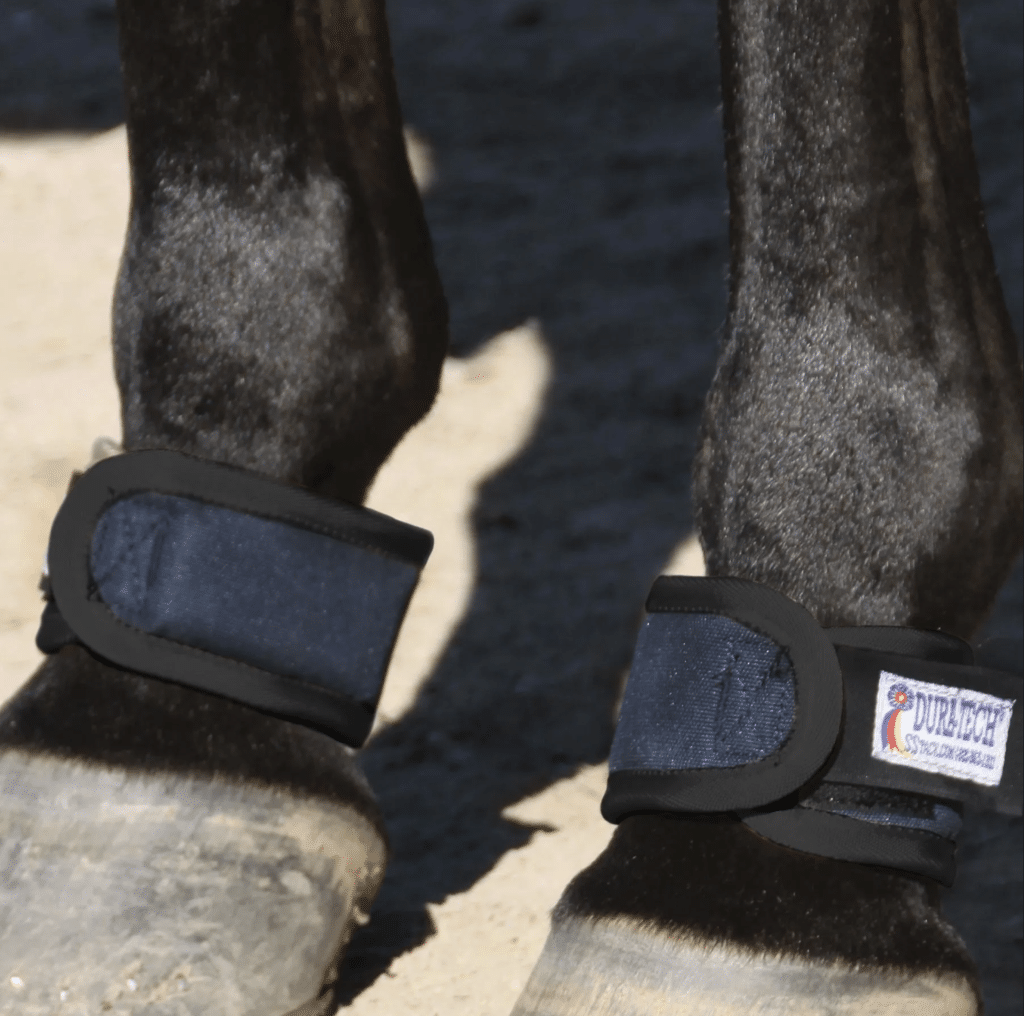
Magnetic therapy can take the form of therapy bands that may fit different parts of the horse’s body. Some bands fit the ankles, while others fit the browband, back of the headstall, or even their tail dock.
These Dura-Tech® Magnetic Ankle Wraps are typical of such a device. These bands offer:
- 15-20 minute sessions at 1100 GAUSS magnet strength
- Five magnets per band
- Lightweight
- Fits any size horse
Magnetic Therapy Machines
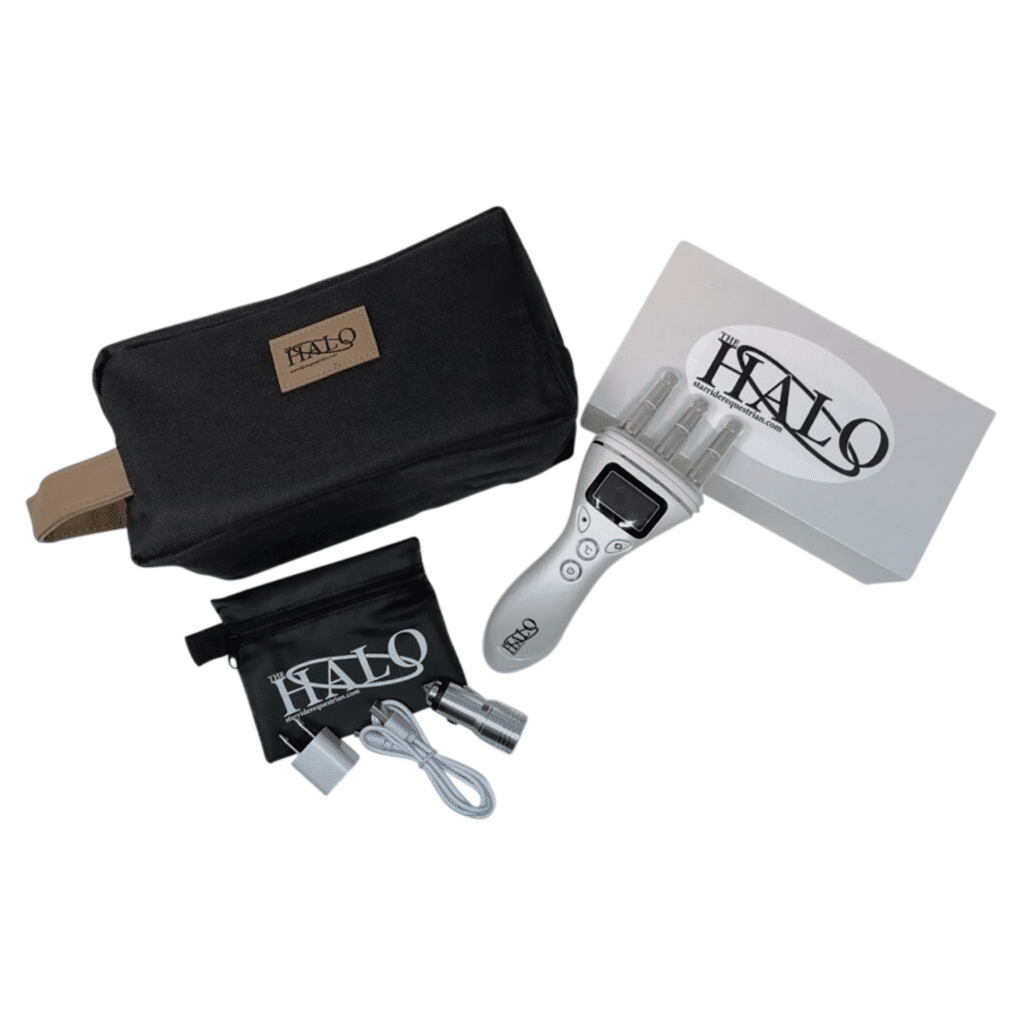
For a home-based therapy tool, The Halo: Equine Therapy Tool offers unique hand-held benefits in treating specific areas of pain and inflammation in the horse. The Halo provides:
- Heat, magnetism, and infra-red therapy
- Charge on the go with a USB car charger
- Vibrational therapy
Conclusion on Magnetic Therapy for Horses
I’m still quite thrilled with my magnetic pad, and it’s helped my horse get over substantial soreness after a tough workout, while reducing the chances of inflammation setting in. Magnetic therapy isn’t for all horses or all horse owners, but if you have tried the usual treatments and you’re up for a different approach, then it’s definitely worth a try.
If your horse is suffering from osselets, which magnetic therapy can provide relief for, then read our guide on just what this condition is all about.

